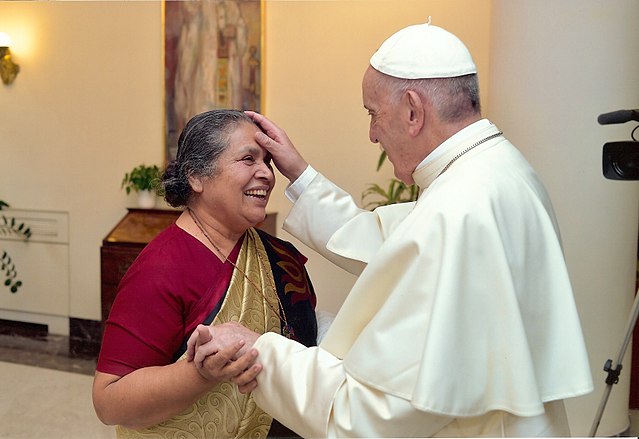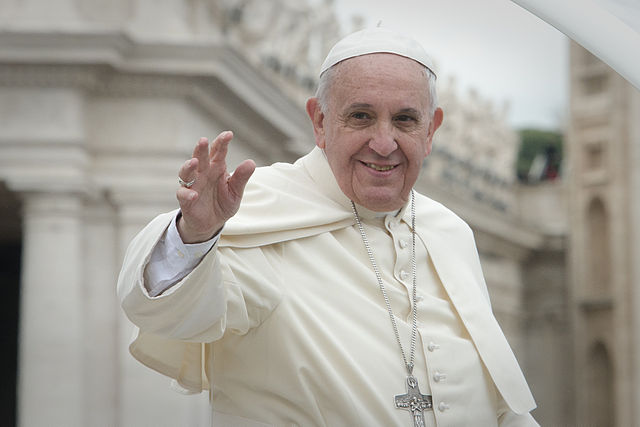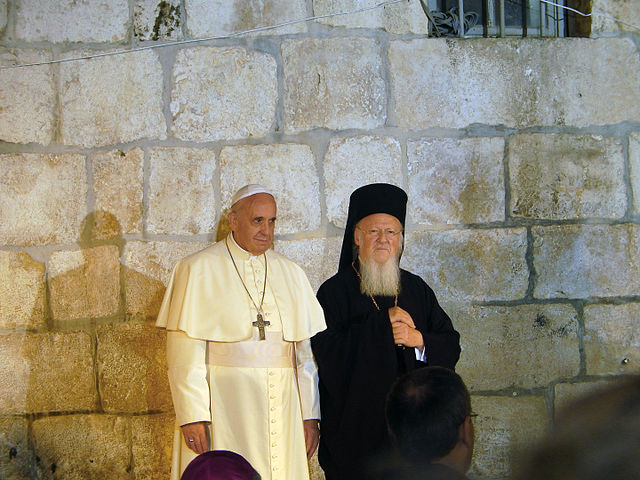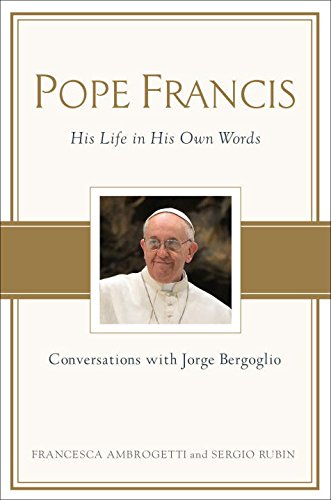Global Plus: Can the Catholic Church Change? Pope Francis and the long, winding road to revitalizing a troubled institution
Editor’s Note: We share these Global Plus columns courtesy of ARDA (Association of Religion Data Archives). Care to read Sergio’s column in the original Spanish? Here’s a link to that text.
Pope Francis came to help renovate the Catholic Church.
In early 2013, a voice rose from the majority of the cardinal electors as well as a significant portion of Catholics overall. The cardinals, in response, chose an outsider
: the first Latin American and Jesuit pope. Some cardinals, just a few, would later claim that they did not really know him. And more than one later regretted voting for him.
However, the desire for a renovation prevailed. There was even a specific road map
for the new stages, which had been outlined in the general congregations and in previous debates of the cardinals before the conclave.
Financial corruption and internal fights, as well as certain mismanagement, had hastened the resignation of Benedict XVI, plus cases of sexual abuse were out in the open. All of this got in the way of what mattered most: a revitalization for spreading the Gospel, which demanded a new pastoral approach in accordance with the new times and new sensibilities.
The election of Jorge Bergoglio implied a change of course after the long papacy of the charismatic John Paul II with his reaching out to the world
and his palpable diplomatic successes. Most notable was his contribution to the breakup of the Soviet empire.
But John Paul II did have a conservative and centralist bias, which began to show signs of obsolescence. This cycle had run its course with Benedict XVI. The Church—in its majority, we insist—was demanding another way to spread its own message alongside a more flexible, collegial structure, in order to respond to the vertiginous transformations occurring within the particularities of each nation.
Cardinal Bergoglio was not only aware of this but also, as a good Jesuit who looks toward the future, had an idea about where to move forward.

Mercy first
Immediately, it became clear that the axis of his pontificate would be mercy.
Such a focus, brought to the secular terrain, can be translated into an open and understanding attitude. This means moving from a rather inquisitorial, condemnatory, and regulatory Church (full of prohibitions) —as perceived by many, at least—to a close and friendly Church that invites people to embrace the joy of the Gospel,
as it is called by the first apostolic exhortation of Francis.
Such a shift, compounded with his frugal style and his strong concern for the poor (How I long for a poor Church for the poor!
he proclaimed, shortly after being elected), and the aim towards a less clerical and mundane Church meant that several observers spoke of Francis as embodying a cultural revolution.
Of course, such a change was not going to happen without resistance. Indeed, it is not an easy task to change such an ancient and enormous institution. Especially as long as it is doctrinally subject to very conservative branches which have proven to be irreducible. Not to mention that the inclinations of more than a few of its members are for power, privilege, and the good life.
For his mission, Francis relied on a series of conditions: from a frugal way of life and great social sensitivity to strong leadership that includes the special ability of dealing with the times. Francis is a man who bets on processes rather than disruptions, which do not ensure real change in the long run. These processes include times of moving forward as well as times of persuasion and knowing when to wait.
Transiting patience
was one of the slogans that Bergoglio used in Buenos Aires. He did not have it easy there, not with the Kirchner government, whose authoritarianism he reproached, receiving mistreatment and subdued defamation in return, or with the most conservative sector of the Vatican, who questioned his discerning attitude toward new realities, such as the demand for marriage equality reflected in civil unions of same-sex couples.
Bergoglio did not deny the postulates of moral theology, yet he considered it necessary to have a proactive rather than confrontational attitude because the latter, in the end, could be counterproductive. This is not any different from the worldview that he brought into his pontificate, which gained him many adherents, as well as some detractors.

Many challenges to change
It is true that Francis has changed almost nothing in terms of standards.
The most relevant change is the possibility that divorced and remarried Catholics can access the Eucharist after a period of reflection and with the bishop’s authorization. This shift came after two synods and continues to face opposition from the most conservative sectors. Further, this motivated the reckless letter from four cardinals asking for clarification.
Such an episode shows how difficult it is to introduce pastoral changes. Maybe before the end of his pontificate, he will succeed in granting married men access to the priesthood in areas where clergy are very scarce, or allowing women to enter the diaconate, that is, the first step of the clergy.
It is not likely, however, that he is going to decree elective celibacy (much less female priesthood), despite society and many Catholics seeing the marriage of a priest as something natural and convenient, especially in light of the abuse cases.
The Pope does not believe that celibacy is the cause. Armed with statistics, he says that the vast majority of abuses are committed by non-celibates. In addition, perhaps Francis’ conviction that celibacy is a gift favoring the practice of the priesthood is mixed with some fear that the current reality of marriage, so affected by divorce and high rates of conjugal conflict, may have an impact on priests who would eventually marry.
On the other hand, he was able to advance rapidly towards greater transparency of Vatican finances. It is also true that he did not find it easy in this regard either: Suspicions of evasion and money laundering in collusion with Vatican officials, which in some cases ended up being more than mere suspicions, required a thorough house cleaning, successfully undertaken after a series of shocks.
Today, the Vatican is subject to international financial controls. In the absence of new scandals, perhaps his work has not had the chance to shine, but this is clearly to his credit. All one has to do is look at the history of the last decades and make a comparison. It is also true that the world has changed in this regard.
The profile of the Vatican structure was—and still is—another great challenge for Francis. Advances in this respect are not so unequivocal. This is because the Vatican bureaucracy has frayed over the centuries, and it is very difficult to change habits. Yet, Jorge Bergoglio longs for local churches to function with an attitude that facilitates rather than regulates faith. It is increasingly common to hear bishops visiting the Holy See from the five continents say that Rome now shows a more welcoming and open-minded attitude.
In short, it is attentive to the world’s different realities.
However one issue facing the Pope that hasn’t abated is perhaps the most tremendous challenge, which is how to deal with the abuse. Despite the great majority of reported cases being quite old, they still haunt him.
Although he undertook a series of measures to combat them and steady the decisions of Benedict XVI, the demand for more assertive responses escalates. In fully approaching this problem on a global scale, the convocation of an unprecedented February meeting of the Episcopal Conference’s presidents aims to be another step forward against the root of such an awfulness that is lacerating the Church.
As if this situation was not difficult enough—first of all for the victims—some very conservative branches have recently turned and begun to attack Francis and hinder his reforms. The most evident proof of this is the statement by Archbishop Carlo María Viganò, a former U.S. Nuncio, where he accused the Pope of covering up for Cardinal Theodore McCarrick, the archbishop emeritus of Washington, D.C. The analysis of that text by prominent Vaticanists had found severe inconsistencies of the accusations, which nevertheless succeeded in generating a great deal of racket.
The ultra-conservative offensive does not seem to stop, and it finds its backbone in the North American right that is associated with the most reactionary clergy. For this reason, Francis has not only been questioned about his open attitude towards the faithful and his straightforward style—there is no shortage of those who say he is desacralizing
the papacy—but also about his stern questioning of some aspects of capitalism, especially financial speculation, or his welcoming stance towards refugees. Or his fight for the environment, to which we should add his opposition to the arms industry and the backlash by their lobbyists.

Building bridges
One should pay Francis a tribute for the advances in ecumenical matters, his good harmony with evangelicals, and his closeness with the Orthodox Christian churches, particularly with Patriarch Bartholomew, in addition to the historic meeting with the Russian Orthodox Patriarch Kyrill I in Havana. Further, his interreligious confraternity stands out. This includes closer links with the Jewish communities (which led to an emotional visit to the former Auschwitz concentration camp), as well as the Islamic communities (which reached the highest point during his passage through the Al-Azhar University, in Cairo).
The Pope did not limit his attitude towards other Christian and non-Christian confessions to being fraternal. Rather, he promoted joint efforts in favor, for example, of refugees and peaceful conflict resolution. The Day of Prayer for Peace in the Middle East held in the Vatican with the presidents of Israel and Palestine was certainly a milestone, as were the individual and general calls for the cease of persecution against Christians in so many parts of the world and the end of suffering for all those who experience religious hatred.
Finally, his efforts to build bridges between peoples and nations, such as the agreement between Cuba and the United States, also deserves to be highlighted. Similarly, beyond the results, his willingness to create spaces for dialogue has had an effect in conflict-ridden countries such as Venezuela, Nicaragua, and the Central African Republic. Moreover, the recent, vital agreement between the Holy See and China on the delicate issue of the appointment of bishops opens a new era for the Catholic Church in the Asiatic giant.
So far, from a historical perspective, Francis’ ecclesial achievements have not been a minor thing, especially considering the internal tensions and resistance. We must bear in mind that the worst ecclesial thing that can happen to a pontiff is a schism. It is imperative that Pope Francis looks after the unity of the Church. At the same time, one should not lose sight of the complex, global context of his pontificate, which is marked by a resurgence of fundamentalism and xenophobic nationalism.
His chosen name, taken from the great saint of Assisi, sums up his pontifical program.
As Francis of Assisi once said, Start by doing what’s necessary. Then do what’s possible, and suddenly you will be doing the impossible.

Sergio Rubin is an award-winning author, journalist and the religion editor of the prominent Argentine newspaper Clarín. He is also co-author with Francesca Ambrogetti of the only authorized biography of Jorge Bergoglio. You can learn more about him via Wikipedia.
Image by Jeffrey Bruno, via Wikimedia Commons [CC BY-SA 2.0]
Image by Myeditstoday, via Wikimedia Commons [CC BY-SA 4.0]
Image courtesy Sergio Rubin
Image by ניר חסון Nir Hason, via Wikimedia Commons [CC BY-SA 3.0]
